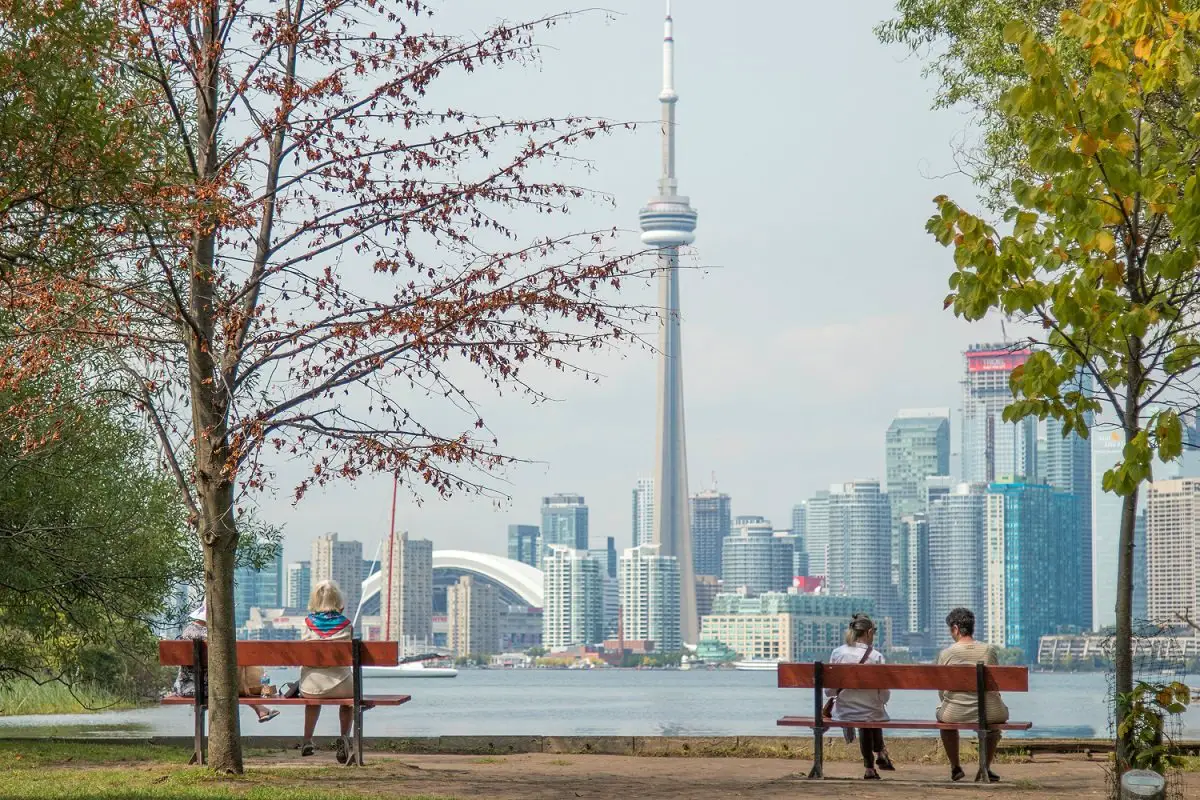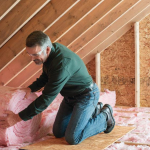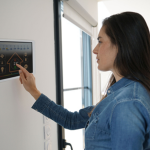
Everyone likes to save money. And score extra points if you can reduce your carbon footprint and be a positive force for climate change at the same time!
The best way to harmonize these goals is right under your nose. That’s right, the best place to start saving money and energy is to take a close look at your whole home.
The way you light, heat, cool, and power your home can greatly impact your bills. Old appliances use more energy than needed, and some forms of energy are dirtier than others. Leaks of all sorts, from heat to water, are invisible money suckers.
But once identified, fixing all these little problems is easier, and with the help of these energy rebates and incentives, a little cheaper than you thought. Even the smallest of actions can produce positive results.
Fortunately, we live in a country that believes the environment—and its residents—are important. That’s why they’ve created energy-efficiency rebate and incentive programs at every level that include sending qualified energy advisors to your home to not only examine every source of energy and wallet drain but also to install energy upgrades for you—sometimes for free!
Let’s take a look at what’s involved in an energy audit, and the government programs that can help you pay for it:
Home Energy Audit: A Quick Primer

So what exactly is a home energy assessment—or home energy audit—and why do you want to want to participate anyway?
First, undergoing a home assessment is easy, fast, and inexpensive (and sometimes free!)
Second, you save money in the end.
Third, you help the planet and future generations by saving energy and changing the types of energy you use.
But most importantly, there is no downside to a home assessment, so you may as well just go for it!
A home assessment happens in two phases:
- 1A pre-assessment (2 hours); and
- 2A post-assessment (1 hour)
The same advisor will do both phases and will initially examine your home to collect information such as the size and age of the home, your lighting, appliances, insulation, and heating and cooling equipment, etc.
They will help you spot air leaks, offer advice on ways to reduce your home’s energy consumption, determine the best options to improve your home’s energy efficiency, and tell you which rebates you qualify for. Once they’re done, they’ll give your home an EnerGuide rating.
Then all you have to do is complete any recommended upgrades (ideally within 3 to 4 months) and arrange for your advisor to do the post-assessment. The advisor will inspect the upgrades and give your home a new EnerGuide rating. Once you have your report, you’re ready to get some money back!
Intrigued?
Take a look at the following programs and see which ones you qualify for. Perhaps you can mix and match a few of them to really maximize your savings! Then continue reading for a few tips on how to make the most of your home energy assessment.

Federal Energy Audit Rebates & Incentives
CMHC GREEN HOME
If you buy, build, or renovate for energy efficiency using CMHC-insured financing, you could receive a 15% rebate for building a home to ENERGY STAR® standards or up to 25% for building a home to R-2000 building standards.
GENWORTH CANADA ENERGY-EFFICIENT HOUSING PROGRAM
Receive a 25% rebate when you build a home through one of Genworth Canada’s qualifying energy-efficient building programs or meet the prescribed minimum Natural Resources Canada EnerGuide requirements and fund it through a Genworth Canada insured mortgage.
So not only can you find some money to help you achieve your home ownership dream from the federal government, you even get some back after you’ve achieved that dream!
RBC ENERGY SAVER™ LOAN
If you’ve already been through the provincial home assessment and upgrade process but still have more work to do, or if it’s been a while and you think there may be more energy upgrades you could make, RBC has your back with a flexible loan plan designed specifically for those with energy upgrade goals.
This loan offers a 1% discount on the interest rate or a $100 rebate on a home energy audit when you make eligible upgrade purchases using their fixed-rate loan, so long as the amount borrowed is over $5,000. Just make sure that your assessment is completed somewhere between 90 days before your loan is approved and 90 days after you receive your loan.
You can even choose how long you need to pay off the loan, from 5 to 10 years depending on the amount borrowed, or pay it off early with no penalties if you like. Better still, should life happen, as it often does, they offer a skip-a-payment option that you can use once a year.
Not only can you save money with new, energy efficient upgrades, but now you can save on the amount borrowed too!
Simply follow these steps to arrange your home energy audit:
- Choose a licensed home auditor through the Natural Resources Canada website. Make sure you get quotes from a few auditors and choose one that you feel offers the best overall value.
- Once your assessment is complete, make sure you get a receipt or invoice from the auditor to receive the discount or rebate from RBC.
- Submit your audit receipt or invoice to your RBC branch within 120 days of receiving your RBC Energy Saver Loan.
Your home energy audit rebate will be credited to your RBC account. The amount will be the actual invoiced amount of the home energy audit up to a maximum amount of $100. For more information on the loan, call 1-800-769-2511 or visit an RBC branch in person.
Keep reading for the programs offering rebates or incentives available from the Ontario government:

Province of Ontario Energy Audit Rebates & Incentives
GREEN ONTARIO FUND
This not-for-profit agency uses its funds to help Ontario residents reduce their carbon footprint and save money. It’s easy to take advantage of the free smart thermostat installation and home energy review included in the program!
Get rebates of up to $20,000 depending on the systems you replace or add, which could include ground- or air-source heat pumps, insulation, windows, or smart thermostats.
Both homeowners and renters living in single-detached, semi-detached, townhome, or row homes can take advantage of this program, but renters will have to submit a landlord consent form.
This is all you have to do to get started saving money:
- Register: apply online or call 1-888-728-8444 (TTY 1-844-466-2017).
- Book an appointment: once your registration is confirmed, you will receive an email within two weeks to book your appointment. Select your appointment date and time and preferred smart thermostat model (If your heating system is incompatible with the smart thermostat models offered, you will still receive the free home energy assessment and home energy report.)
- You will need to sign a participant agreement and agree to the smart thermostat manufacturer’s terms of use and privacy policy.NOTE: Due to the overwhelming popularity of the program, your time slot for an appointment may be sometime within the next 4 months.
- Enjoy your home visit: on your appointed date, a GreenON Installations program representative will arrive to install your chosen smart thermostat and complete your home energy review.NOTE: Please be aware that GreenON Installations program representatives will always contact you before coming to your home. If you are called by a program representative and would like to verify their credentials, you can call GreenON Support at 1-888-728-8444.
- Receive your home energy report: after your appointment, a home energy report will be put together and emailed to you within a few weeks.
Are you eligible?
- You live full time in the property you want the home assessment done on and it is your primary residence OR you are the building owner/manager of the property.
- You must be willing to complete a Participant Agreement form and agree to the thermostat manufacturer’s terms of use and privacy policy for any energy-efficient products you receive.
- You have an existing thermostat (not a smart thermostat) that can be removed and decommissioned?
SAVE ON ENERGY WHOLE HOME PROGRAM
Offered together with your local utility provider, the Whole Home Program allows all Ontario homeowners to benefit from a wide range of energy-saving rebates. You can receive thousands of dollars in incentives to make upgrades throughout the house, use less energy, and save money.
To reap the rewards of this program, start by getting an energy assessment of your home, which helps you learn the best ways to reduce your energy use, such as replacing your furnace, replacing windows, or installing new or more insulation. Complete two upgrades and you could qualify for major rebates.
But why stop there? If the more you upgrade, the more you save, so why not upgrade a few more items that could save you money? Homeowners can also take advantage of Save on Energy rebates on ENERGY STAR® electric appliances, such as $600 back on the purchase of a new central air conditioning system or $75 in your pocket when you replace your current refrigerator.
And it gets better if your home is electrically heated. You can qualify for a rebate of up to $5,800 to install an air-source heat pump and cut your electricity costs. Heat pump rebates are also available to customers with other types of home heating as well.
Here’s how it works:
- Contact a certified energy advisor.
- Your advisor visits your home and goes over every detail with you.
- Complete the upgrades.
- Do a post-assessment.
- Receive all your rebates.
Don’t know what utility company offers this program in your community? Enter your postal code here to find out.
SAVE ON ENERGY HOME ASSISTANCE PROGRAM
Here is the best part of the province’s Save on Energy home assessment program: Everyone can take part. When you work all week just to put food on the table, it’s pretty impossible to think about something as far down on your list of priorities as the environment and energy-efficient upgrades. But here’s the twist: if you’re able to make the upgrades or fixes or tweaks, you’ll end up with more money in your pocket. Then life is just that much easier—and warmer (or cooler!).
So if your household income is under the allowable threshold, or you have a social housing provider, you could qualify to be part of this sister home assessment program from Save on Energy.
Here’s how you know if you qualify:
- You are a resident of an eligible non-profit housing property.
- You own, rent (you will need landlord consent), or lease the residence and are the primary or secondary utility account holder listed on the bill.
- You have an annual household income for the previous year (gross income of all household members aged 18 or older) lower than the following eligibility limits:
- 1 person – $32,843
- 2 people – $40,886
- 3 people – $50,266
- 4 people – $61,028
- 5 people – $69,217
- 6 people – $78,065
- 7 or more people $86,914?
- OR, you have received one of the following for the past 12 months:
- Allowance for the Survivor
- Guaranteed Income Supplement
- Allowance for Seniors?
- Ontario Works
- Ontario Disability Support Program
- Healthy Smiles Ontario Child Dental Program
- OR, you have received a Utility Low Income Energy Assistance Program grant or Ontario Electricity Support Plan payment within the past 12 months.
- OR, you have qualified to participate in a natural gas low income demand side management (DSM) program in the past 12 months.
As with the overarching Save on Energy home assessment program, eligible homeowners will welcome a certified energy advisor into their home to identify all energy- and money-saving opportunities.
In this program however, the assessment is done for free, you will receive advice on other energy-saving steps you could take, and the advisor will install free energy-saving devices for you such as these:
- Energy Star light bulbs (LEDs)
- Power bars with timers
- Efficiency showerheads (standard and handheld)
- Aerators (kitchen and bathroom)
You may also be eligible for a new, energy-efficient refrigerator or another energy-efficient appliance such as a window air conditioner. And after all that, you may also be eligible to have weatherstripping installed around your doors and windows and additional insulation installed in your attic or basement.
To learn more about the program or learn how to participate, call the Independent Electricity System Operator at 1-877-797-9473.
SAVE ON ENERGY DEAL DAYS
To round out your energy-efficient upgrades or maintain those you’ve already made, make sure you check out this program that offers a set schedule of deals in stores to save on products that save energy (including lights, weather stripping, and programmable thermostats). Check their website regularly for dates and details.
SAVE ON ENERGY POOLSAVER PROGRAM
Constant-speed pool pumps run all the time, even when they don’t need to. Variable speed pumps work when you need them to and at adjustable speeds. So save electricity and keep your equipment lasting longer by upgrading to a variable-speed pool pump and get a $400 rebate at the same time!
ONTARIO AFFORDABILITY FUND
If it seems energy efficiency is beyond your reach, and at the same time you don’t qualify for the low income programs available, Ontario’s Affordability Fund might be just what you need.
This program offers home energy assessments and energy-efficient upgrades to qualified residents. All you have to do is visit their website and tell them how much your electricity bill and your total household income is, and they’ll tell you what you qualify for. You are not eligible for this program if you qualify for low-income energy assessment and upgrade programs though.
Whether you’ve already had a home assessment done or you’re planning one now, why not look into all the rebates and incentives that you could throw on top and could help you save even more money while you’re saving energy? Keep reading to find all the additional money-saving opportunities available to you on top of the national and provincial programs.
Keep reading to find all the additional money-saving opportunities available to you on top of the national and provincial programs.

Toronto Energy Audit Rebates & Incentives
HOME ENERGY LOAN PROGRAM
This program offers low-interest loans of up to $75,000 to qualifying homeowners interested in improving the energy and water efficiency of their home. The loans are paid back over time via installments on your property tax bill. These loans are attached to the house rather than the homeowner, so if you move, the payments are taken over by the new owners.
Eligible upgrades include:
- High-efficiency furnaces, boilers, and air conditioners
- Windows and doors
- Insulation
- High-efficiency water heaters
- Rooftop solar PV panels
- Solar hot water systems
- Drain-water heat recovery systems
- Air sealing
- Toilets
This loan helps homeowners avoid the high upfront cost of renovations and access up to $2,250 in incentives from utility companies. Once the loan is approved, homeowners can hire the contractor of their choice from the list of approved contractors and complete their renovations. The maximum amount of the loan can’t be worth more than 10% of the value of your home or $75,000, whichever is less. This includes a 2% administrative charge.
You may qualify for a low-interest loan through HELP if:
- You own a detached, semi-detached, or row house,
- All the property owners on title agree to the program,
- Your property tax and utility payments to the City are in good standing, and
- You get written consent from your mortgage lender, if applicable.
So in just 7 easy steps, you could have the most energy-efficient home on the block:
- Complete an application form. Once the City receives and approves your application, you receive a funding offer that details the maximum funding amount your property is eligible to receive. If your home is subject to a mortgage, we give you a letter and form for you to give to your mortgage lender. Your mortgage lender’s consent is required before you will receive the funding offer.
- Book a home energy assessment with an energy advisor registered by Natural Resources Canada, (which will include a basement-to-attic assessment of your home’s insulation, heating and cooling systems, and any air leaks or drafts.) and receive a Renovation Upgrade Report with recommendations for specific improvements, an EnerGuide rating based on your home’s current energy performance, and information on available incentives and rebates.
- Complete a funding request, determine which improvements you wish to make, and get quotes from the contractor(s) of your choice, based on your goals, budget, and the recommendations of the Energy Advisor. Your funding request has to include a list of intended improvements you wish to make, details and cost estimates based on contractor quote(s), and the estimated incentive and rebate amounts available to you from your utility company.
- Sign and return the Property Owner Agreement the City sent you after approving your funding request. Once the City receives the signed agreement, they will give you up to 30% of the money you need to get started.
- Complete your improvements and submit your project completion report with all contractor invoices and your new EnerGuide rating label (below).
- Book your post-retrofit home assessment with your energy advisor who will verify the improvements and provide a new EnerGuide rating for your home. Once the City receives the report and supporting documents, it will send you the remaining funds.
- Repay the loan over time on your property tax bill. Once your project is complete, the City will tell you when your loan payments will begin. You will be enrolled in the City’s Pre-authorized Tax Payment plan and repay the City in 11 monthly installments per year over the term of your loan, and you can pay the outstanding balance at any time, without penalty.
Click here to apply now. For more information on the program, contact
Sarah Rodrigues, Program Coordinator
Home Energy Loan ProgramEnvironment & Energy DivisionCity of Toronto55 John Street, 2nd FloorToronto, ON M5V 3C6416-392-1826[email protected]
ECO-ROOF INCENTIVE PROGRAM
While you’re making positive environmental changes, why not look into this innovative Toronto program? It offers grants to residents to support the installation of green roofs and cool roofs. For green roofs, you can get back up to $100/m2 installed plus up to $1,000 for a structural assessment, and for a cool roof, get up to $2 to $5/m2.
Green roofs help our planet by supporting vegetation growth, which comes with lots of associated benefits that include saving energy, reducing greenhouse gas emissions and urban heat, capturing stormwater, improving air quality, and creating habitats. Green roofs are made up of a waterproofing membrane, drainage layer, organic growing medium (soil), and vegetation.
Before you can begin a green-roof project and before you apply for a green-roof grant, you must have a structural assessment done on your home by a licensed engineer so you know if your home can support the weight of a green roof. That may sound like it could be expensive, but the City also offers grants that, in most cases, cover the cost of the assessment. Make sure you keep copies and originals of all your paperwork, including the structural assessment report and the paid invoice for the structural assessment.
Cool roofs reflect the sun’s rays and reduce heat build-up with a coating applied over an existing roof system or with a new single-ply waterproofing membrane. If your engineer has determined that your home can’t support the weight of a green roof, or you prefer to install a cool roof rather than a green roof, you can still get back as much as $5/m² for a cool roof with a new membrane, or $2/m² for a cool roof coating over an existing roof.
Whichever you choose, remember these key points for either option:
- You must cover 100% of your roof (minus equipment and mechanics) unless you include a letter stating when you intend to complete the remaining roof.
- You have to wait for funding approval before your start the project. It’s also recommended you contact the program manager before applying.
- Any project projected to cost more than $50,000 (cool roofs) or $100,000 (green roofs) must receive Council approval.
- If you’re approved, you will receive the grant money when the project is complete (which must be within 6 months) provided you have met all the requirements and have all your documents (including a permit, Declaration Letter from the contractor, photographs of the finished roof, final invoice, and an invoice or quote for any future maintenance plan).
- The City may request an inspection of the new roof.
To apply, download and return the application form and any associated documents to the address below or contact
Annemarie Baynton
Program Manager
Eco-Roof Incentive ProgramEnvironment & Energy DivisionCity of TorontoMetro Hall 55 John Street, 2nd FloorToronto, ON M5V 3C6
416-392-1848[email protected]
LIVE GREEN TORONTO
Save money and choose a greener lifestyle by downloading the free Live Green Perks app, available for Android and iOS devices. Show your membership at select locations around town and receive discounts for doing and buying the things you love!
TOWERWISE
Through financial assistance and education, TowerWise helps owners of Toronto’s high-rise residential buildings reduce their greenhouse gas emissions and energy use by 30%. Interested landlords can request more information at (416) 392-0271 or [email protected] or download an application form here.
FAUCET FILTER REBATE
Because lead can have serious effects on health, the City of Toronto continually works to replace substandard service pipes.
Residents that have lead pipes can apply for a $100 rebate to help purchase the appropriate filter for lead removal and/or replacement cartridges if they meet certain criteria, such as being a low-income household with children under 6 years old.
TORONTO RENOVATES HOMEOWNERS PROGRAM
Part of the Ontario Renovates program, the Toronto Renovates Homeowners Program offers funding for lower income seniors and people with a disability who wish to make health, safety, and energy efficiency repairs or accessibility modifications to their homes. Funding is limited, however.
MYWATER TORONTO
Create an account and log on to monitor your water usage and trends and identify any leaks you may have. This program can even keep track of your water-use habits so you can create a plan to save water—and money!

Guelph Energy Audit Rebates & Incentives
In addition to the Green Fund Ontario and Save on Energy home assessment programs offered in conjunction with local utility companies, the City of Guelph also offers these energy-efficiency improvement rebates:
GREYWATER REBATE
Did you know you can save energy and money with a greywater reuse system? A greywater reuse system collects your used shower and bath water, cleans it with chlorine, and then uses the greywater to flush the toilets in your home.
The perfect time to install a greywater reuse system is while you’re either building your new green home or adding upgrades after completing a home assessment.
The City of Guelph will give you $1,000 rebate when you install a greywater reuse system. Just apply to the program, purchase and have a qualified plumber install a greywater reuse system (with a permit), and submit your application with your proof of purchase and installation.
To apply, download, fill out, and submit the appropriate application form and submit it for approval to the City:
Water Services Division
City of Guelph – City Hall
1 Carden St.
Guelph Ontario, N1H 3A1
RAINWATER HARVESTING SYSTEM REBATE
Another great way to save money and energy—and help your city’s storm sewer system— is to install a rainwater harvesting system. Capture rainwater and use it to water your lawn and gardens and wash your car!
Install a seasonal outdoor system or an all-season indoor/outdoor system and get a rebate of $0.50/L of tank storage (to a maximum of $2,000). To qualify for a rebate, a single-unit seasonal rainwater harvesting system must be ?500 L.
To apply, just download the application form and follow the instructions.
RESIDENTIAL SUB-WATER METER PROGRAM
Sub-water meters help indicate leaks, wasteful habits, and inefficient water products, so installing a sub-water meter could save you a lot of money over time. Install one of these meters in the City of Guelph and you could qualify for a $125 rebate, and if you install an add-on meter with smart technology, you could get an additional $100! So if you’re making energy-efficient upgrades and you qualify, make sure you apply for this program too.
FLOWIE WATER SENSOR KIT REBATE
Installing a Flowie water sensor kit will help you conserve water, detect leaks and floods, and save money. Flowie is sensor that attaches to your water meter and uses cellphone signals—without using data—to detect leaks, frozen pipes, water usage, water temperature, and power outages. Take advantage of this program and get a $100 back (plus free monitoring for the first year)!
ROYAL FLUSH TOILET REBATE
It may seem like a small fix, but switching out an old toilet can have a big impact. Older toilets use a lot more water than today’s water-efficient ones, may flush poorly, and have leaks. This leads to more water use, ongoing maintenance, and higher water bills.
But you can change that and save yourself a lot of money over time. Simply switch out your old 6 L (or more) toilet with an eligible new, efficient, 4.8 L model and get a $50 rebate per toilet (to a maximum of 2 toilets). Just download the application form to apply!

Halton Region Energy Audit Rebates & Incentives
TOILET REBATE PROGRAM
Reduce your water consumption, your energy bill, and your impact on the environment by replacing your old, inefficient toilet with a new one. And get a $75 rebate! This program has a limit of one per household (not one per year).
Just fill out an application form, purchase a toilet (remember to keep your receipt!) and mail it back to the address below. Then just sit back and wait 8 to 10 weeks to receive your rebate.
Halton Toilet Rebate Program
c/o Halton Region
1151 Bronte Road
Oakville, ON
L6M 3L1

Region of Peel Energy Audit Rebates & Incentives
DOWNSPOUT DISCONNECTION REBATE PROGRAM
Your downspout may not be something that’s top of mind, but it actually plays an important role in helping the environment and helping you save money on your energy bill.
When you disconnect your downspout from the municipal sewer system, you not only reduce the risk of flooding and contaminating your streams and rivers, but you save money by using rainwater to water your lawns and gardens. That makes disconnecting your downspout a win-win!
So the Region of Peel is offering you $25 for each downspout you disconnect if you disconnect just one or two and $100 (maximum) if you disconnect three or more. And if you have a disability, they have a Downspout Disconnection Financial Assistance Program that will reimburse you for all the downspouts disconnected on your property to a maximum of $1,000.
Fill out the form to apply, and return it to this address:
Downspout Disconnection Subsidy Program:
2 Copper Road, Brampton, ON L6T 4W5
Once your application is received, a representative will visit you to inspect the downspouts, and then you will receive your rebate in 6 to 8 weeks.

Enbridge Gas Energy Audit Rebates & Incentives
HOME WINTERPROOFING PROGRAM
If you have a house built before 1980, your income is below a set threshold (e.g., a family of four must be below $62,589) and you are an Enbridge customer, you could have your house winter proofed for free by certified contractors. Winter-proofing measures could include insulation and draft proofing.
This in turn could save you 30% off your winter energy bills! And at the same time, you also reduce your carbon footprint, stay healthier, and increase the value of your home. Simply fill out the form online; call; or download, print, and send the form back to the Affordability Fund centre for your area.

Union Gas Energy Audit Rebates & Incentives
HOME WEATHERIZATION PROGRAM
Much like the Home Winterproofing Program offered by Enbridge Gas, this program will give you a free home energy audit and energy-efficient upgrades to prepare you for the winter. See how much money you can save and how much healthier you and your family are after you take advantage of this program.
You qualify if you are a low-income (a four-person household can have a maximum income of $62,588 or less) homeowner, your house was built before 1975 and needs more insulation, and you are a Union Gas customer.
Apply online.
Hydro One Energy Audit Rebates & Incentives
FIRST NATIONS CONSERVATION PROGRAM
If you are a First Nations customer living in a First Nations community, make sure you take advantage of this program. HydroOne will do a complete energy assessment of your home and install all necessary upgrades—at absolutely no cost to you!

Bullfrog Power Energy Audit Rebates & Incentives
BULLFROGPOWER
Interested in making the transition to all green power to fuel your home? Bullfrogpower offers perfectly bundled packages that save you money and reduce your carbon footprint while using alternative, clean energy.
9 Tips for Making the Most of Your Home Energy Assessment

Navigating the world of mortgages and real estate for the first time can be daunting, intimidating, and confusing, but it doesn’t have to be. If you do your research, stay organized, and enjoy the process, it’ll all come together before you know it.
Taking advice and getting help from others helps too, so here are some tips to help you on your journey to home ownership:
Organize all your paperwork and always make copies of everything
As with any program, it pays to organize all your paperwork and always make copies of everything.
Incomplete applications or insufficient documentation is the number one reason eligible rebate applicants don’t get their money back after all their well-meant efforts.
Don’t go through all that time, money, and effort of having a home assessment done, completing all your upgrades, and filling out application forms just to find you’re missing one little document at the end!
Gather up a year’s worth of utility bills
While you’re getting all your paperwork together, gather up a year’s worth of utility bills. Your advisor will want to know how much energy you used and how much you paid for it.
Use a certified energy advisor registered
Make sure you always use a certified energy advisor registered with Natural Resources Canada to conduct your home energy assessment. Mistakenly using an unregistered advisor will void any possible rebates. And beware, there are lots of scammers out there claiming to be certified advisors!
The best way to ensure that you’ve hired the honest-to-goodness, real deal is to go directly through Natural Resources Canada, Save on Energy, Affordability Fund, Green Ontario Fund, or your local utility company. They each have a list of registered, certified advisors, and they will never send anyone to your home in person without having made an appointment with you first.
So if someone comes to your door unasked or calls you claiming to be an energy advisor though you haven’t contacted anyone yet, they are NOT energy advisors and do not represent any of the companies offering legitimate home energy audits.
Be present for the assessment
Be present for the assessment and have a list of suspected issues or problems ready in advance so you can cross things off as you go and so you know which questions to ask.
Don’t be afraid to ask
Speaking of questions, don’t be afraid to ask which incentives you qualify for if your advisor doesn’t tell you. Also feel free to ask them how else you could save energy and money.
Certified advisors are well acquainted with energy-saving opportunities even if the company they represent or that is conducting your audit doesn’t offer incentives for the opportunities they see. It could still be worth it for you to look into these other opportunities.
Besides, there are usually lots of small improvements you could make yourself, such as caulking.
Be prepared to answer the advisor’s questions
Be prepared to answer the advisor’s questions so you don’t get caught off guard. These questions could include:
- average thermostat settings in the summer and winter
- number of occupants
- number of heating and cooling zones
- heating sources and fuel type(s)
- number of occupants
- who’s home during daytime hours
- any energy-intensive appliances or devices (such as heat pumps, electric space heaters, or medical equipment)
Do your homework
Do your homework so you know what programs you qualify for, what you need to qualify, and all the requirements attached to each program such as household income, permissions, documentation, etc.
Read up on Energy Star labels, EnerGuide ratings
Read up on Energy Star labels, EnerGuide ratings and other related information such as U values, R values, and ER ratings, for example.
Energy Star labels meet strict technical specifications for energy performance and typically fall in the top 15% to 30% of their class for energy performance. That’s why all energy-efficiency rebate programs require you to upgrade to an Energy Star product or upgrade the one you already have.
U values refer to the amount of heat loss, so the lower the number the better. ER values are based on the overall efficiency of the window; therefore, a higher rating is better.
And finally, R values are the thermal resistance of your insulation, so again, the higher the better.
These are just examples of the terms you should be familiar with to better your home energy audit experience and ensure you receive all the available financial incentives.
If your home is heated with wood, it would be wise to clean out the ashes
If your home is heated with wood, it would be wise to clean out the ashes because the last step in a home energy assessment is a blower test, and that can get really messy if there are any ashes!
How to Do a DIY Home Energy Assessment

Now that you know everything there is to know about home energy assessments, energy-efficient upgrades, and how to make the most of your assessment, what happens if you can’t afford an assessment just yet, you don’t qualify for any of the programs just yet, or you’re simply not ready to take the leap?
Well, why not conduct a DIY home energy assessment?
While it won’t be as thorough or professional as having it done professionally and you won’t be able to take advantages of some of the rebates attached to having a professional take care of your assessment, it will still give you a good idea of where your energy loss is, what you could probably take care of yourself, and how you could save some money now—until you have professional assessment done.
Here’s how to get started:
- Start with looking for drafts and leaks. You’ll find the worst of them around doors and windows, so look for holes and cracks. You can even find larger drafts by simply waving your hand in front of the holes and cracks. To find smaller leaks, try the smoke test. Turn on your bathroom and kitchen vents, close all windows and doors, and light a stick of incense, running it around the windows and doors. If you see the smoke move in or out, you have a leak. Also check around cables, pipes, and your foundation.
- Check your insulation if you can. Crawl into your attic and/or crawl spaces and measure the insulation with a ruler. The insulation should be at least 16 inches (40.6 cm) thick. Make sure you wear protective gear when you do this!Remember to check the insulation behind your walls too. This can be tricky because you need the right tools, but Ryobi makes an infrared thermometer app for your iPhone that lets you find specific spots of heat loss. A thermal imaging camera works even better, so try the Flir One for iPhone app to actually see the temperature discrepancies.
- While you’re checking your walls, remember to check light switches and receptacles on exterior walls, hot water pipes, and duct work.
- Make sure to take a look at your appliances too. When was the last time you had your furnace serviced? All your heating and cooling appliances should be serviced every year and should be kept clear of surrounding clutter (as well as registers and air-intake vents).
- Take a look at your duct work and see if there are any holes or gaps that need fixing. Baseboard heaters should be checked for leaks, rust, dust, or lint accumulation.
- Don’t forget your water heater! It too should be kept clear of clutter, checked for leaks and rust, and pipes should be covered.
- Check your air conditioner if you have one. Is it more than 15 years old? It definitely needs replacing. Are there leaves or debris stuck in it? Clear it out!
- And if you’ve installed an electricity monitor, check to see where you could improve your electricity usage.
- Another great way to save money from electricity drain is to borrow a watt reader from a public library to see what appliances are draining the most energy and costing you the most money. Most Ontario libraries loan out watt meters, so take a look to see if yours is one of them.
Now that you’ve read this far, you are an expert on home energy assessments and how to use them to save yourself money and help save the planet!






Why nothing on water leak monitoring and shut off. Water is Gold will soon be the motto.
Please let me know what products and incentives are there to install water sub metering and shut off.